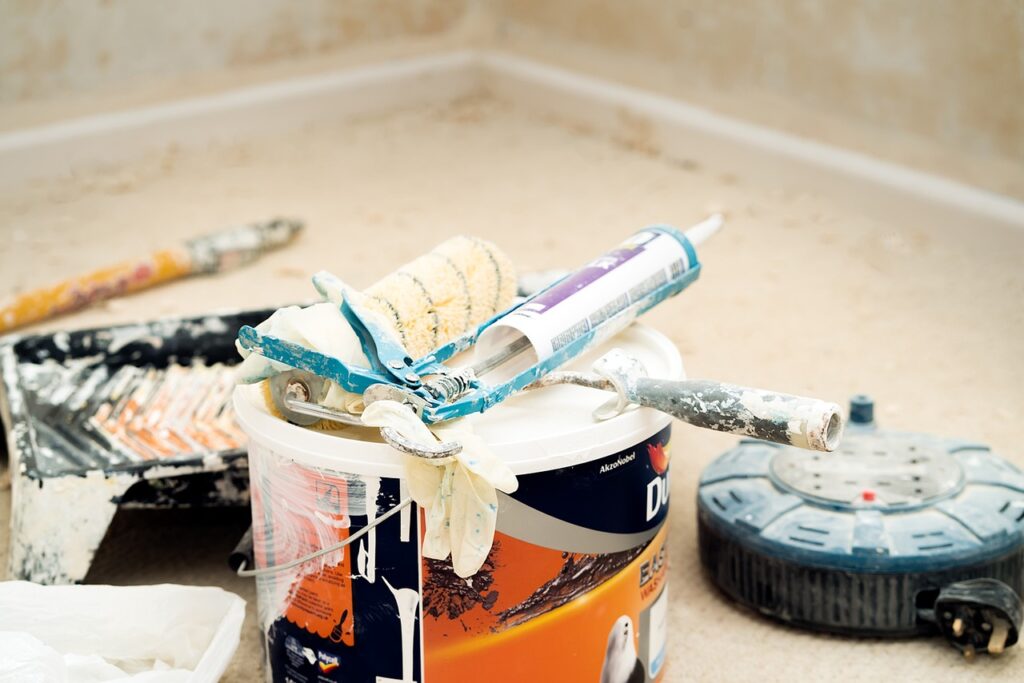Caulking is one of the unsung heroes of home maintenance. Often overlooked, it plays a critical role in protecting your home from water damage, mold growth, and energy loss. Re-caulking when necessary is essential for maintaining the integrity of your home’s surfaces and ensuring a safe, comfortable living environment. Here’s why re-caulking, especially in areas that come into contact with water, is so important and how it can benefit your home.
- Preventing Water Damage
Seal the Gaps:
Caulk acts as a sealant to close gaps and joints around areas prone to water exposure, such as sinks, bathtubs, showers, and windows. Over time, caulk can degrade due to moisture, temperature changes, and general wear and tear, leading to gaps that can allow water to seep through.
Avoid Costly Repairs:
When water seeps through damaged caulk, it can lead to extensive damage to walls, flooring, and cabinetry. This can result in costly repairs and replacements. Regularly re-caulking these areas helps prevent water intrusion and minimizes the risk of expensive water damage.
- Reducing the Risk of Mold and Mildew
Mold Growth:
Moisture that gets trapped behind or under deteriorated caulk can create a perfect breeding ground for mold and mildew. Mold thrives in damp, dark environments, and if left unchecked, it can spread rapidly and affect the health of your family.
Health Implications:
Mold exposure can lead to various health issues, including respiratory problems, allergies, and other health concerns. Re-caulking helps keep these moisture-prone areas dry and inhibits mold growth, ensuring a healthier indoor environment.
- Enhancing Energy Efficiency
Preventing Air Leaks:
Damaged caulk can lead to air leaks around windows, doors, and other openings. These leaks can allow heated or cooled air to escape, leading to higher energy bills and reduced comfort in your home.
Improving Insulation:
By maintaining a good seal with fresh caulk, you can improve your home’s insulation, making it more energy-efficient. This not only helps in reducing energy costs but also contributes to a more consistent and comfortable indoor temperature.
- Maintaining Aesthetic Appeal
Preventing Cracks and Peeling:
Over time, old caulk can crack, peel, or discolor, which can detract from the overall appearance of your home. Regular re-caulking ensures that these areas look neat and clean, maintaining the aesthetic appeal of your home.
Smooth Finish:
New caulk provides a smooth, uniform finish that enhances the visual appeal of your bathroom, kitchen, and other areas. It creates a polished look that complements the overall design of your home.
- Easy and Cost-Effective Maintenance
Simple Process:
Re-caulking is a relatively simple and cost-effective maintenance task that can be performed by most homeowners. With a few basic tools and materials, you can remove old caulk and apply a fresh layer to restore the seal.
Regular Inspection:
Incorporate caulk inspection into your regular home maintenance routine. Check high-moisture areas periodically and address any signs of wear or damage promptly to prevent more significant issues down the line.
Tips for Effective Re-Caulking
Choose the Right Caulk: Select a caulk that is appropriate for the specific area and conditions. For bathrooms and kitchens, a mildew-resistant silicone caulk is often ideal.
Proper Preparation: Clean the area thoroughly and remove any old, damaged caulk before applying a new layer. This ensures a strong bond and a smooth finish.
Apply Evenly: Use a caulk gun to apply an even bead of caulk along the seams. Smooth it out with a caulk smoothing tool or your finger for a clean, professional appearance.
Allow for Curing: Follow the manufacturer’s instructions for curing times. Allow the caulk to dry completely before exposing it to water or heavy use.
Regular Checks: Monitor the condition of your caulked areas and reapply as needed to maintain a proper seal and prevent issues.
Conclusion
Re-caulking when necessary is a crucial part of home maintenance that helps protect against water damage, mold growth, and energy loss. By regularly inspecting and updating caulk in areas that come into contact with water, you ensure the longevity and efficiency of your home while also safeguarding your family’s health. Incorporate re-caulking into your home care routine to maintain a beautiful, functional, and safe living environment.


